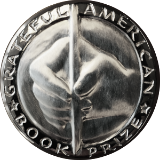October 1 — October 15, 2021
History Matters
Showing our children that their past is prelude to their future
Edward Bellamy wrote Looking Backwards in 1888. It featured a 19th century time traveler who journeyed to the 21st century and told of a fictitious—but marvelous—invention that allowed one to play music almost at will.
The radio—as it became known—did not appear in 2000; Guglielmo Marconi received a patent for his gadget in 1896, but in his time, it was regarded as a scientific curiosity.
On October 1, 1920, Scientific American magazine reported “it has been well known for some years that by placing a form of telephone transmitter in a concert hall or at any point where music is being played, the sound may be carried over telephone wires to an ordinary telephone receiver at a distant point. But it is only recently that a method of transmitting music by radio has been found possible.”
And according to History.com, the National Bureau of Standards in Washington, D.C. started testing the transmission of music via the radio in late 1919 and early 1920—just in time to help catapult the Jazz Age in America and the world.
The Grateful American Book Prize recommends The Jazz Age: The 20s by Time-Life Books.

The Italians and the Germans were the connoisseurs of opera—until George Gershwin. Enthralled by the genre, and mesmerized by Porgy, DuBose Heyward’s novel of African American life in Charleston, SC, Gershwin wrote the author and inquired about collaborating on a musical score.
That was in 1926, but the Gershwin’s—in demand composers—couldn’t begin work until 1933. Two years later, Porgy and Bess debuted on Broadway, and flopped.
According to History.com, “Many of the songs had been cut from the show between its trial run in Boston and its Broadway debut, however, a fact that may well have hurt Porgy and Bess with critics. In fact, the full George Gershwin score of Porgy and Bess would not be performed again until a triumphant 1976 revival by the Houston Grand Opera helped establish its current place in the standard operatic repertoire.”
For more information about the Gershwin’s, the Grateful American Book Prize recommends Lawrence D. Stewart’s The Gershwin Years – George and Ira.

The first use of submarine warfare occurred in 1776—during the American Revolution; the Turtle, an American submersible vessel, attempted to sink the 64-gun HMS Eagle in New York Harbor, but the mission failed, and the Turtle was lost; the American sloop carrying it was submerged by the British.
The world’s first noteworthy submarine was the H.L. Hunley, named for the person who built it for the Confederacy. On October 15, 1863, it went down during its trial run in Charleston Harbor; reconstructed by the following February, it encountered the U.S.S. Housatonic, fired a torpedo into its hull, and capsized.
Although it was the first recorded triumphant submarine attack in history, the Hunley went under before it got to shore.
The reason for its descent has never been determined. Some say the Hunley settled on the ocean floor to wait for the tides to shift in the submarine’s favor; others believe its swipe with the Housatonic caused its demise—or possibly—there was a collision at sea.
In 2000, the Hunley was salvaged and put on display in Charleston.
The Grateful American Book Prize recommends Mark Ragan’s Submarine Warfare in The Civil War.

History Matters is a biweekly feature courtesy of The Grateful American Book Prize.




